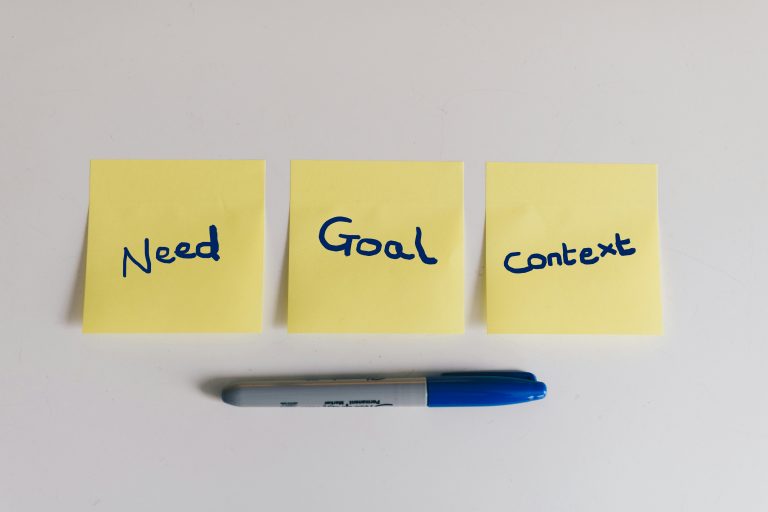Raylene Armstrong, Managing Partner
There is much written about behavioural change or new habits being a vital ingredient in the success of change or transformation programmes, so as a change manager of over 20 years I wanted to undertake an experiment to see how well I can build a new behaviour and healthy habit.
The mission? To join a Gym and start swimming (I mean regularly swim).
My Goal To swim 3 miles per week and for this to become part of my weekly routine.
Full disclosure I am a reasonable swimmer, but I do have a bad track record with gyms, many a failed habit and lots of £££ spent on wasted gym memberships!
I wanted to see how well I could commit this time where;
- I have choice, I can decide when and how often I want to swim.
- I do not need to swim out of necessity.
- No one is encouraging me to swim.
t is said that change is easier when there is no choice. Consider the pandemic, offices closed, and overnight we embraced (or at least got on with) remote working. Hybrid working which was the exception is now the norm. As a result of no choice there was an incredible change acceleration into this new way of working.
So I wanted to delve more deeply into how change can be successful when there is choice. It is so much harder as it requires influencing, role modelling, selling the benefits, coaching people to adopt something different, making the change stick through repetition.
It is of course a bonus if the change is better for individuals impacted, but sometimes a change is about an organisational outcome, consolidating systems, cost savings etc. The What’s in it for the employee isn’t always obvious or easy to sell.
So back to my experiment, there are many incredible people who have led the debate in the field of behavioural change, I like the COM B model developed from 19 frameworks of behaviour change identified in a systematic literature review by UCL, Susan Michie, Maartje M van Stralen, Robert Wes.
The Com B model states that there are a number key components to behavioural change namely;
1. Capability: the ability to perform the new behaviour and build new habits.
2. Opportunity: Considering the environment around the individual that either inhibits or facilitates a behaviour change.
3. Motivation: The special ingredient that fuels the desire to adopt a new behaviour or develop a new habit. Capability and Opportunity also influence motivation, creating the right condition for motivation to flourish that then fuels the behaviour adoption.

Susan Michie, Maartje M van Stralen, Robert Wes.
Swim Challenge
So how did each of these elements in the COM-B model applied for my swimming?
Capability: There were no barriers, I have the membership, the ability, so I just had to make the effort to join and go, easy right?
Opportunity: Probably my biggest barrier, I am always busy, or rather I am not good at making time. A wise person once told me people make time for things we care about and it is very true. We have choices. To counter my excuses, I determined not to pin down my swimming to specific times or days which meant that when I do make an excuse I am re-negotiating with myself to find a better time rather than just skipping altogether.
Motivation: This was my biggest win. By not setting unrealistic goals like weight loss I have instead found other motivations, for instance the enjoyment I get when I swim, no devices or distractions for a few hours a week, also sparks lot of creative thinking.
What I have learnt
Change is a process and not a one-off event, It can be difficult to make large changes in one step, but breaking the desired outcome or behaviour change into smaller parts can improve chances of success. It can be difficult to stay motivated if the reward for behaviour change seems unrealistic or vague instead set small goals to celebrate small but important wins! As suggested by Gollwitzer (1999)
- Goals should be as specific as possible.
- The goal should be in the immediate rather than the distant future.
- The reason for a behaviour change should be for positive gain rather than loss or negative impact.
BJ Fogg observed that new behaviours and habits are easier to form when we build them into existing routine. I will go for a swim once I have done an hour of emails/ dealing with urgent work. Because I’m not trying to create a whole new space for the swim it is easier to achieve.
Frequency is more important than time (James Clear, Atomic Habits) it’s about laying enough Myelin (think of this as creating a new road to ease traffic flow) Myelin acts as a cue firing my brain to follow the newly laid road to the swimming pool. I heard someone say the other day which I love “ I will not go every day but I will go today” This works really well for me. I give myself grace if I can’t go 3 times a week but I have committed to at least 2 times per week, and I am pleased to say the habit is sticking.
A big learning from these 2 months and from all the change transformations I have been part of is the importance of creating space for the change to be adopted well.
A leader once said that for them the change would be successful it is was invisible and no one had noticed it had taken place. I understood this was about minimising disruption, but the reality is unless very small, the change needs to be allowed for with time set aside for individuals to understand, practice, gain their confidence, and to develop the motivation to adopt the change. Only then will the desired outcomes and longer- term benefits be realised.
Closing thoughts
Reflecting back on my experiment (or should I say my new habit) in the COM-B model and how it applies to change programmes, opportunity seems to me to be the catalyst rather than motivation and if I reflect how it applies to change management this is about leaders understanding up front what it takes for the change to be well adopted.
Of the 3 elements we often focus a lot on the capability, providing good training and also the motivational side, we communicate and engage well on the “What’s in it for you”, but as I have found in my swimming it was the opportunity ( time and space) to form a new behaviour, that was the critical factor.
It is easy to skip swimming or in the case of a change programme, revert back to old ways , as making the time to do something that is new can be difficult when faced with all the other daily jobs to be done, but the rewards for making time are incredibly satisfying and better than I expected. But what of the experiment? Well this is now something that I have absorbed into my weekly routine and funnily I find I do have the time I never knew I had fit in!
Raylene Armstrong, Managing Partner James and Carmichael Consulting.


